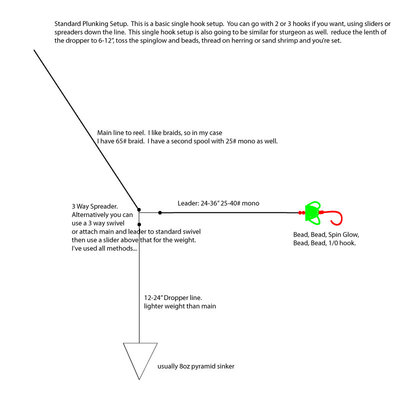Bank fishing for salmon on the Columbia river
There are a number of places to bank fish for salmon on the Columbia River. I've fished Prescott (nearly two hours drive for you) to the west, Chinook Landing to the east, and a few of MANY places in between (social security beach, kelly point, just to name a couple more places).
Rod selection is variable. If you go to one of the popular places (prescott, SS beach, bonniville) you'll see guys using all sorts of different things. The important part is gear that will be able to cast a 6-12oz weight (weight depends on where you're fishing. I generally use an 8oz everywhere i've been) out to where the fish are.
I personally use an 11' Lamiglass Surf King rod. It is a bit overkill for steelies, but I can only afford so much gear. I use this rod for banking for salmon and sturgeon, and for surf fishing on the coast. Like I mentioned, I can't afford to have a rod/reel combo for everything like some guys. The rod, brand new cost my $90, and the reel about $45. Most guys plunking on the columia are going to be using 9' rods. You'll also want a rod holder to punch into the sand. A 3-4' wire fence post, 1.5" ID PVC pipe and some zip ties and you're set there...
One you have a rod that can cast the weight, things get infinitely different. Everyone runs things a bit differently. Spinglows, corkies, small Kwikfish, hotshots, light spinners, baited with nothing, eggs, sand shrimp, herring, prawns... you get the idea... Here's how I've been doing things though.

Hope that helps things out just a lil bit. There are a lot of places to fish. If I had things to do all over again, I would have gone to one of the popular plunking spots (Meldrum Bar, Prescott, Suavies) and talked to some of the guys there first. Looked at their gear, saw how they were doing things, then gone out and got my gear. Even still, the first time I went out using the setup desribed above I caught my first steelhead ever.
I remember showing up with no idea what I was doing. I knew the setup (like above) but was not used to, or comfortable fishing in an area where there is a rod in the ground every 12 feet. Persisting on I drove all the way to the end and took the last spot on the beach, tied up my lines and let her go. I was fortunate that the first time I casted that giant rod and that 8oz weight that I didn't snap off the weight, put things right in line with everyone else, and generally didn't look like a fool... I saved that for my second cast....
